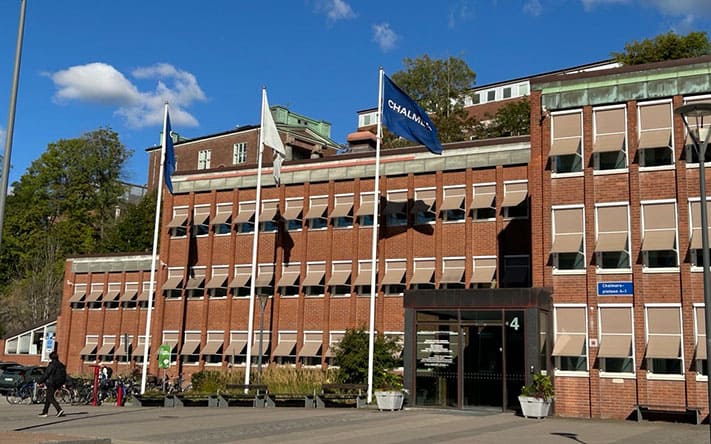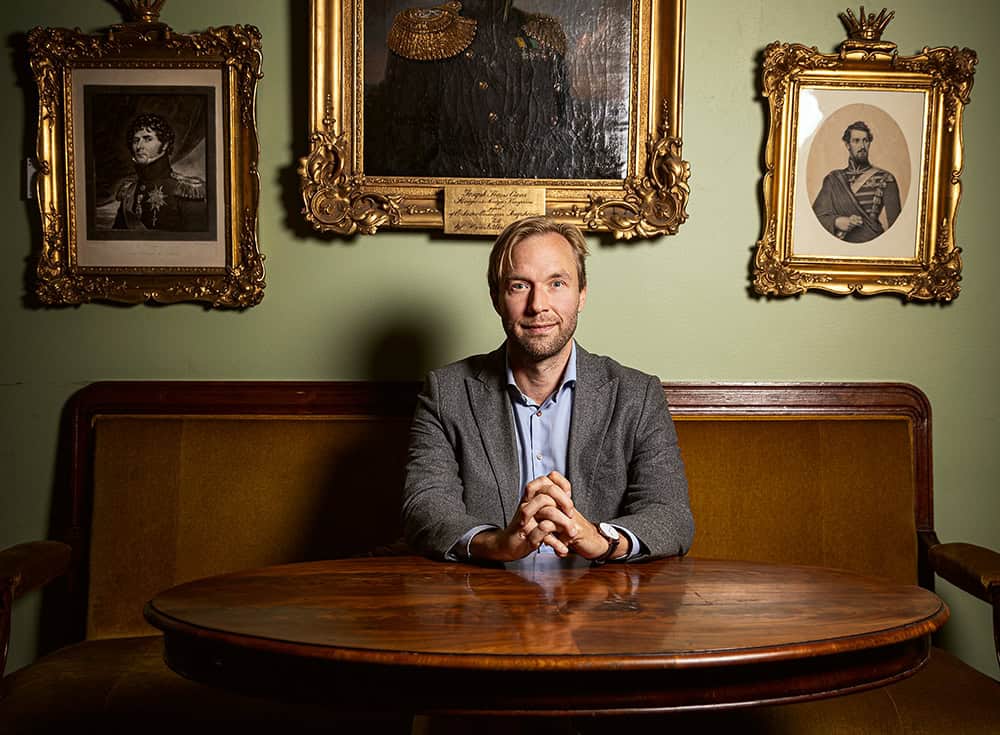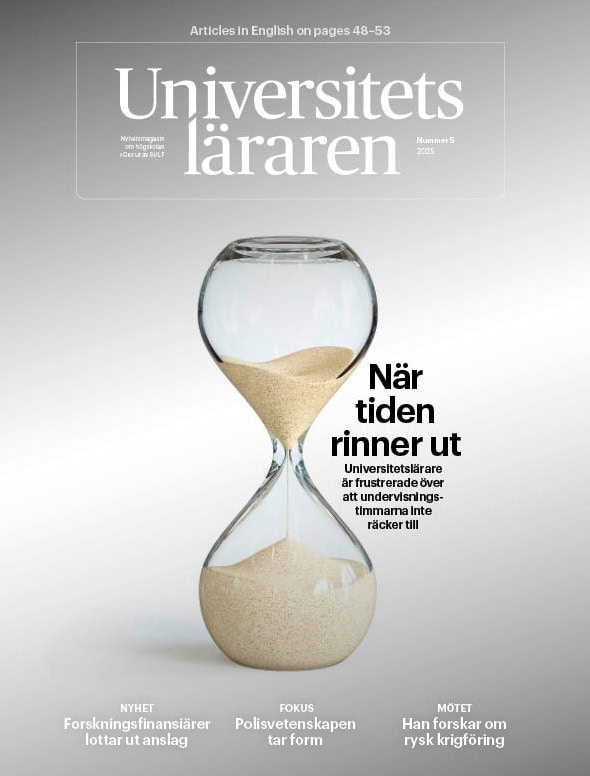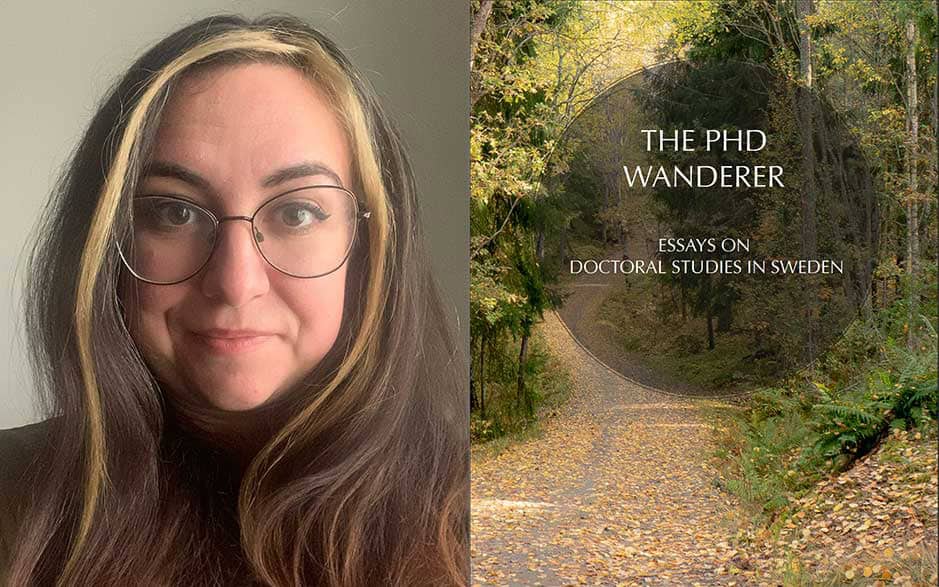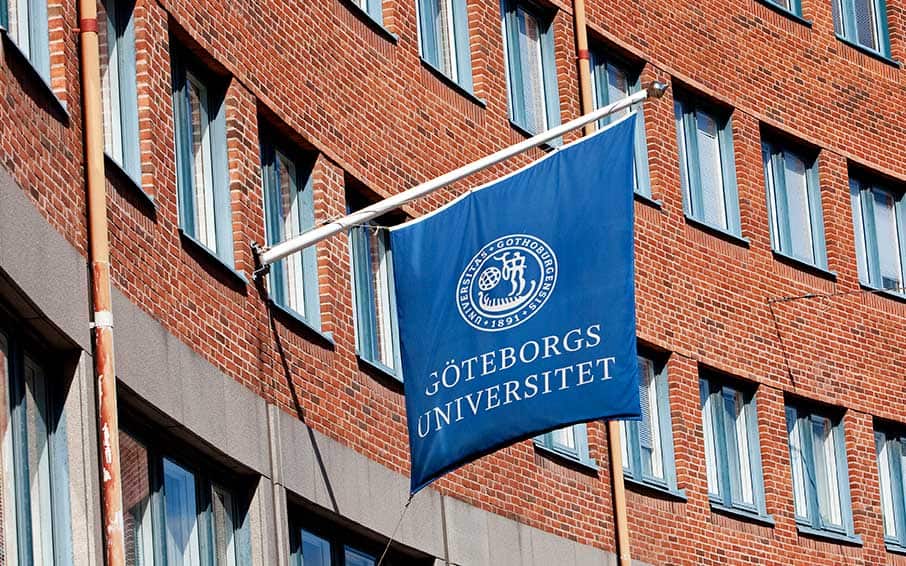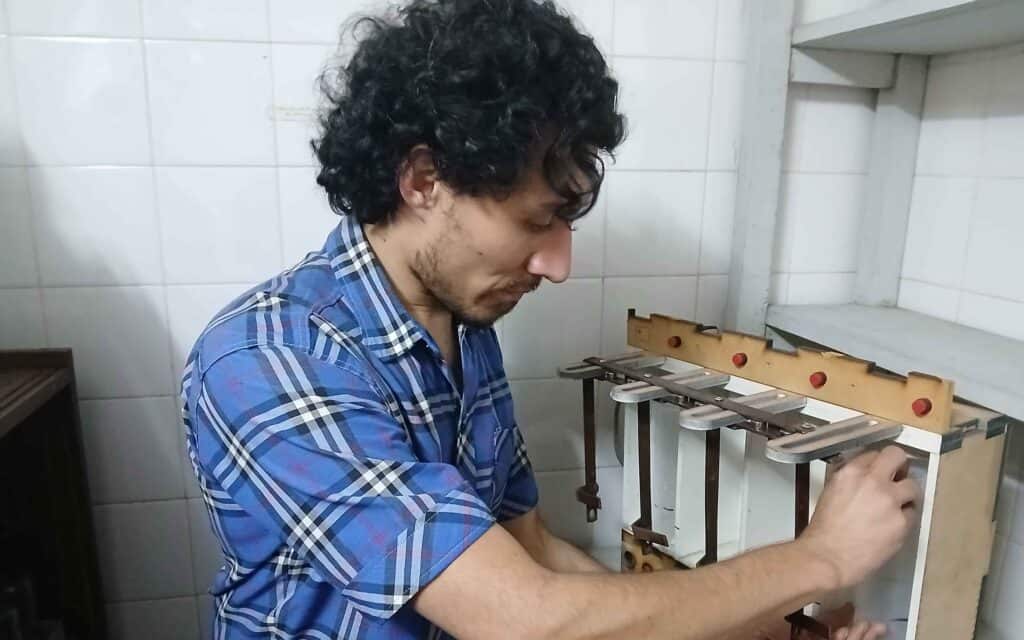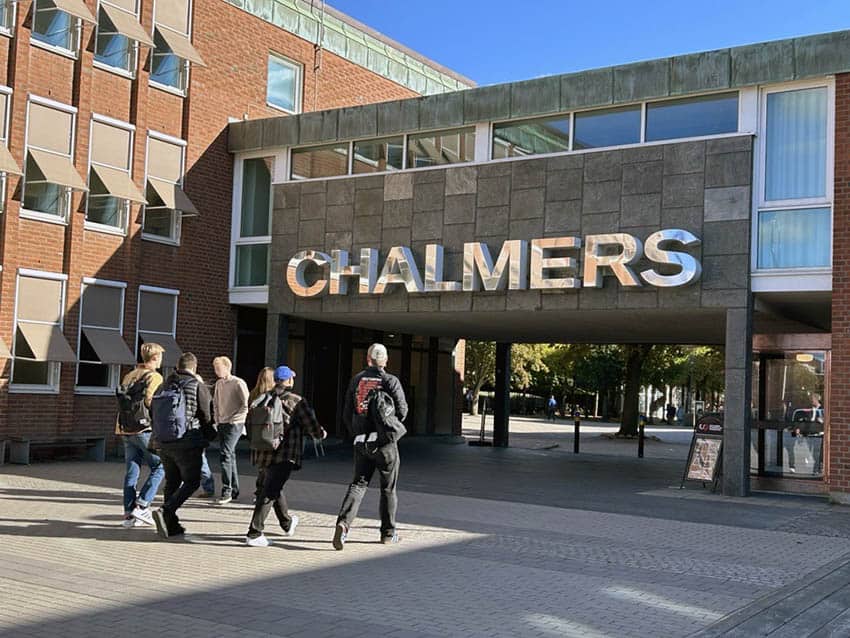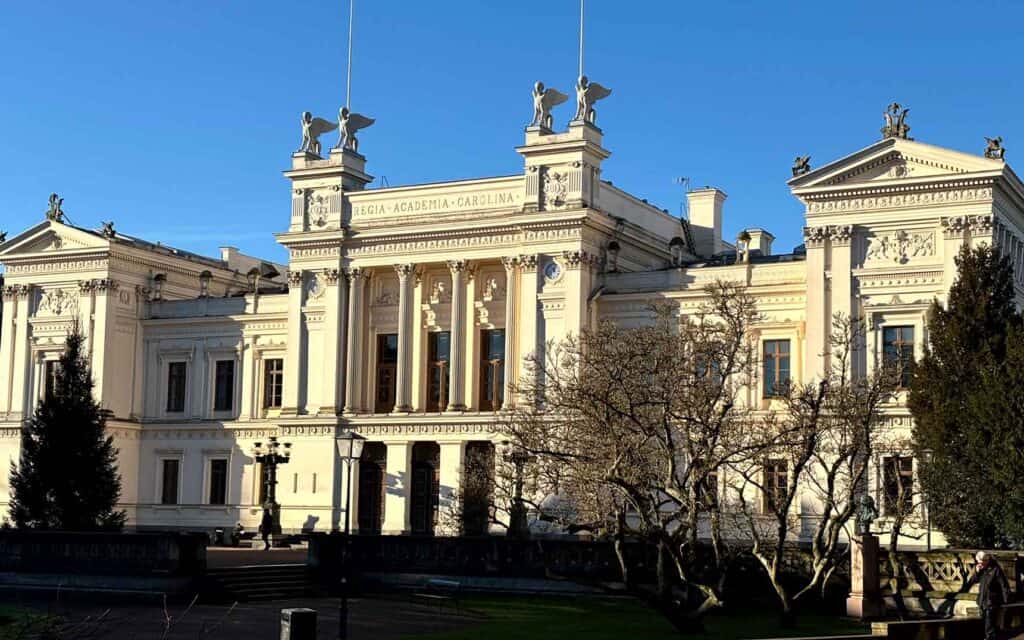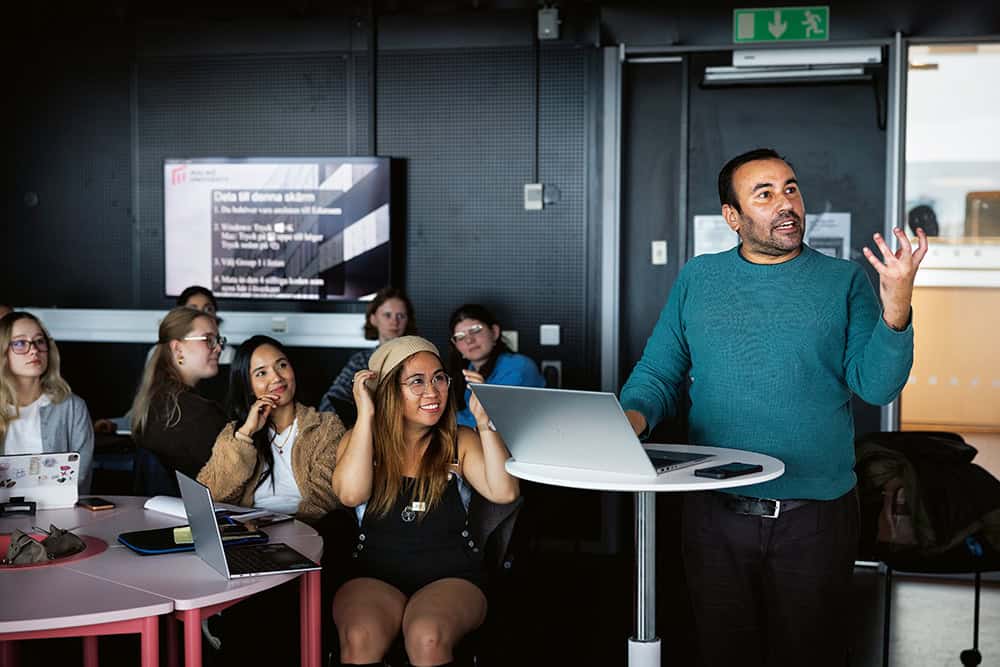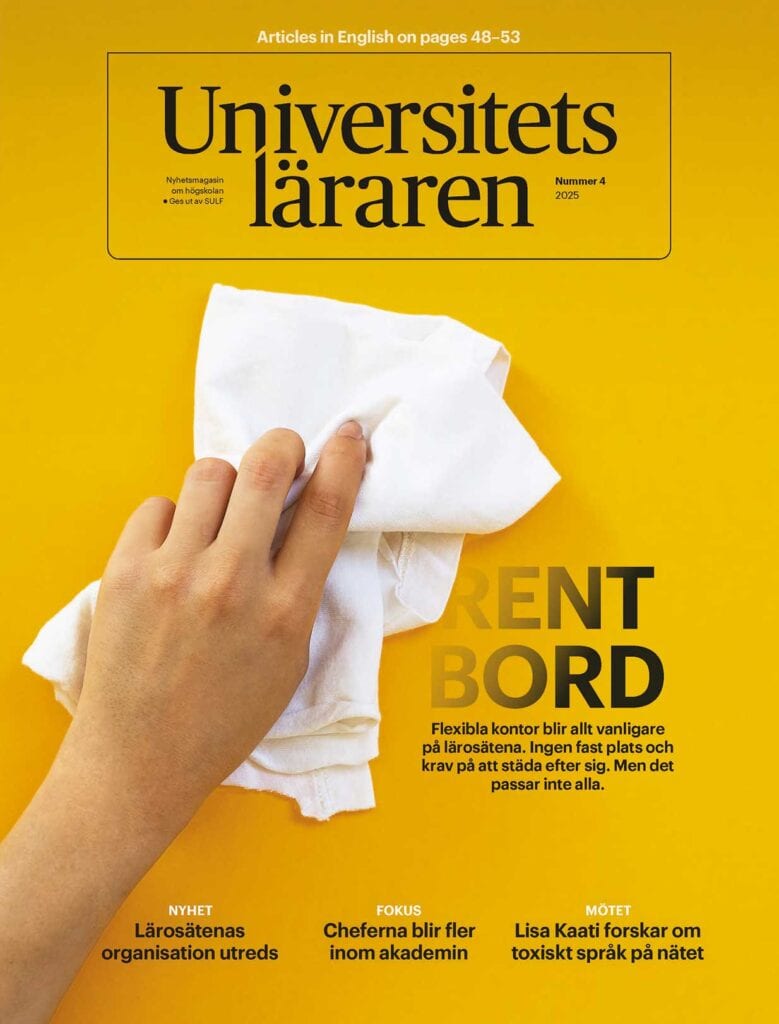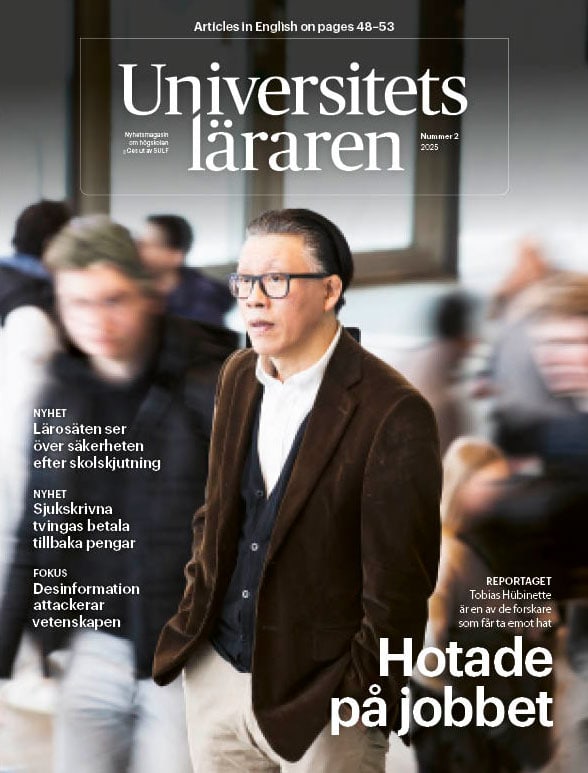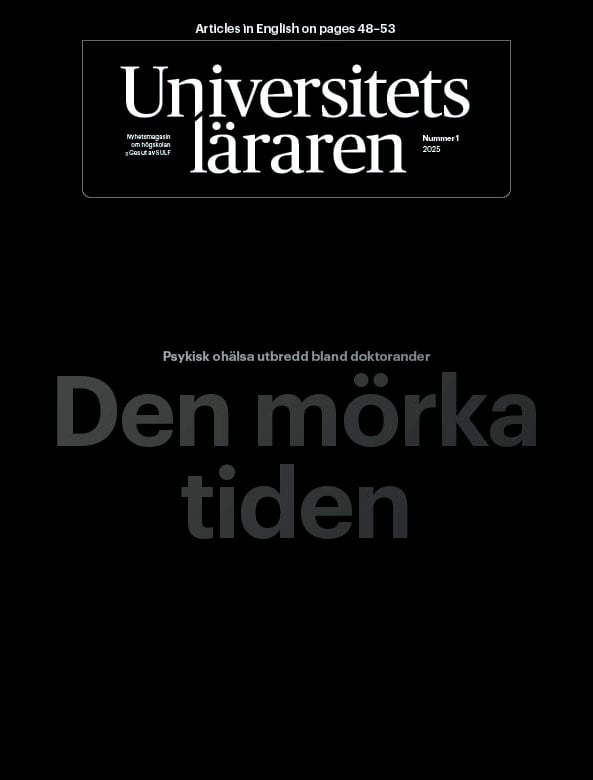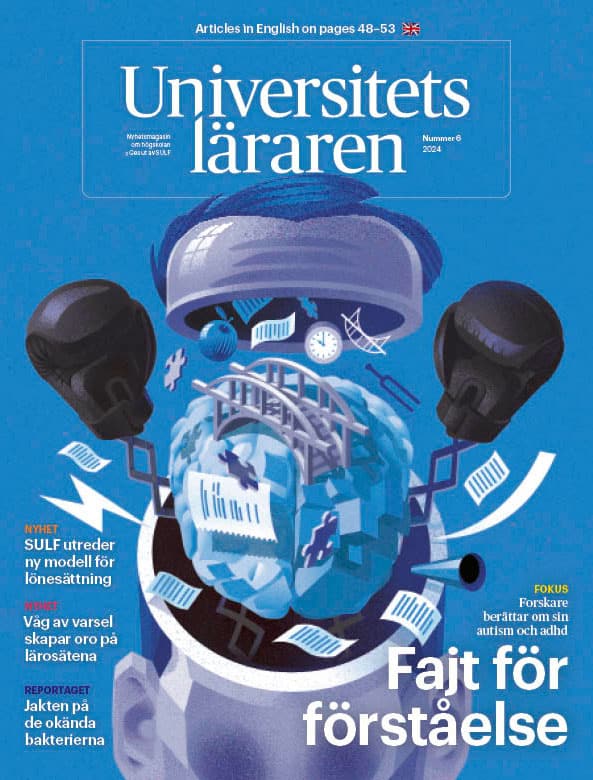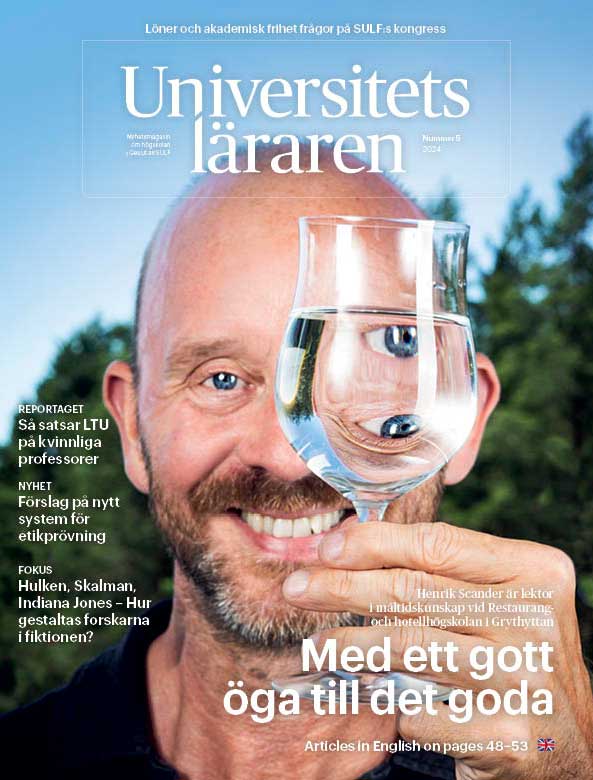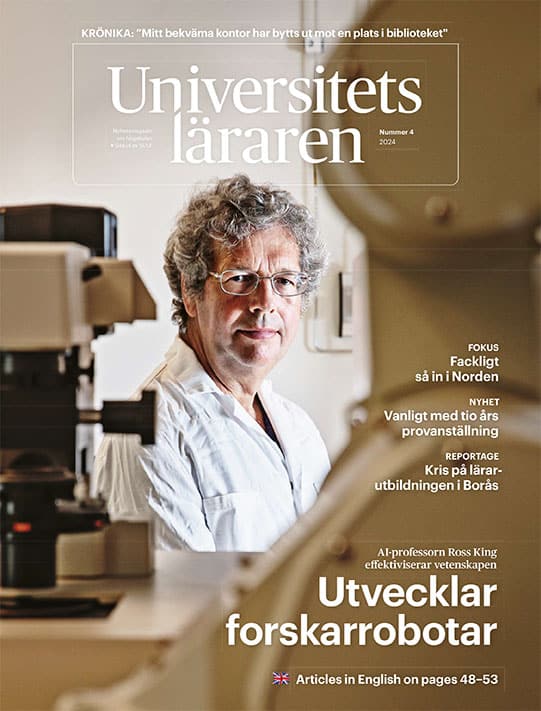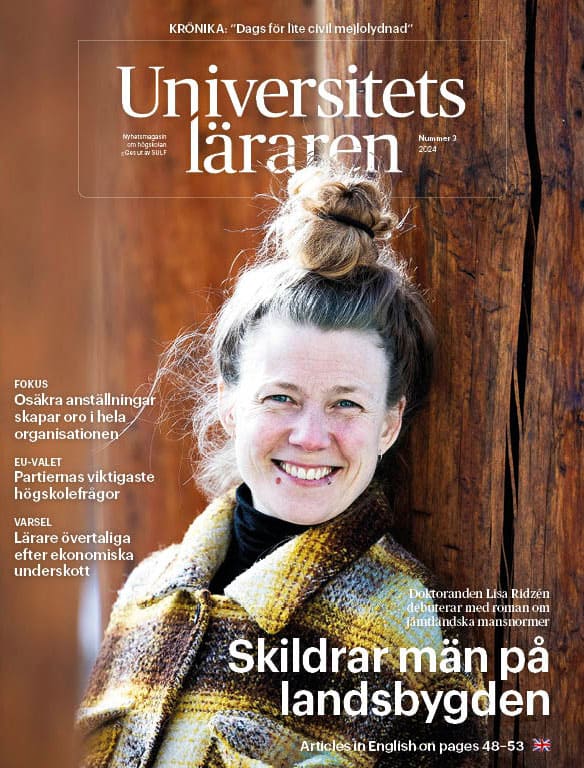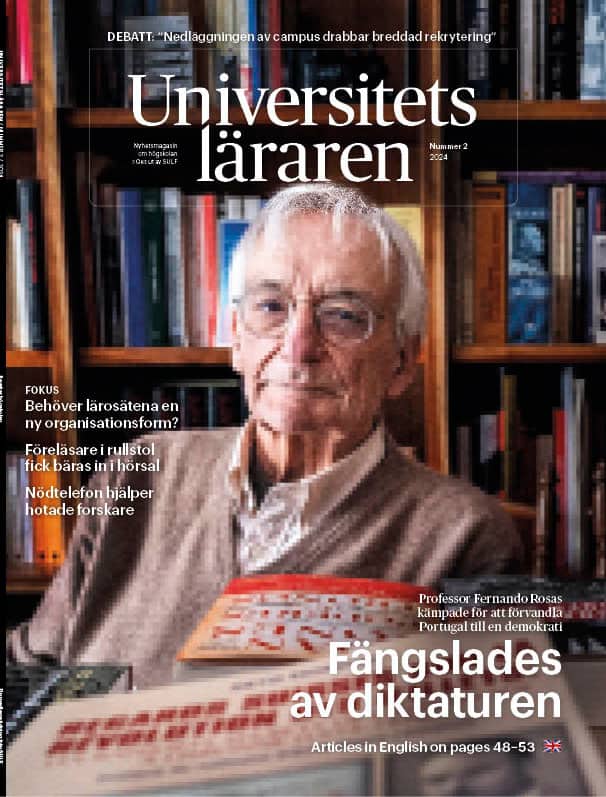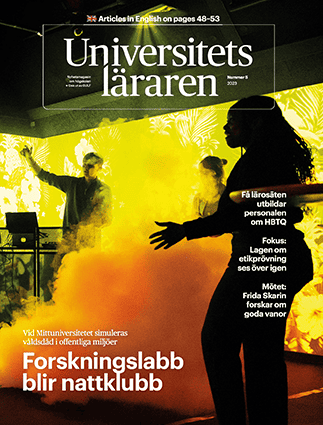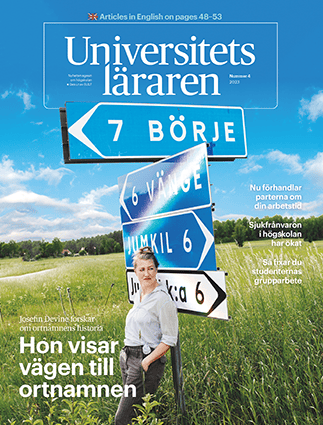For a long time, Sweden was best in class. When other countries made cuts to higher education and research, Sweden invested, especially in times of crisis. More students, more university teachers, more researchers.
But in the past year, with rising costs, financial concerns have spread through Swedish higher education institutions. But concerns have also been raised about academic freedom.
There is a widespread belief that the expansion phase of higher education is over. The signs are that research will receive more money, while education will be forced to cut back. Resources will be reallocated from humanities to science and technology. Funding caps will be lowered, meaning that higher education institutions will be able to educate fewer students. At the same time, the numbers of young people applying to universities and colleges will grow over the next ten years.
“We have seen decades of unprecedented expansion of higher education and research,” says Mats Benner, a professor of research policy at Lund University. “But nothing lasts forever. There may not be a radical change of direction, but the shift is coming. This broad expansion has come to an end.”

Mats Benner
Professor of research policy at Lund University
He finds it difficult to see that the constant wishes for more basic funding and for higher education institutions to no longer be state agencies will be fulfilled.
“In Sweden, the political debate that governs higher education funding often changes focus. Politicians have their own issues and priorities that they want to implement. And the politicians do not want to relinquish their control,” he continues.
Pam Fredman, a former vice-chancellor of Gothenburg University, does not foresee any future expansion either. However, she anticipates an increased need for education.
“Society increasingly demands more education and training throughout life,” she says. “In other words, lifelong learning. And I do not mean just employment transition programmes and commissioned education. There will be a need for adult higher education in the normal system, and that will require higher education institutions to adapt.”

Pam Fredman
Former vice-chancellor of Gothenburg University
When Fredman examined the funding of higher education institutions when she led the government’s Governance and Resources Inquiry, (known as ‘Strut’), she proposed that the funding should be in the form of a single grant. Not surprisingly, she is critical of a system in which politics continues to separate funding for education from funding for research.
“The whole of society is crying out for skills and competence, both at foundation level and further education at university level. Employers say that they see this as crucial for society. But now we have a government research bill that directs money to certain areas of research without any consideration whatsoever for the kinds of education that society needs.”
“If we are to recruit good people to universities and colleges, we must also be able to give them good conditions, good career paths,” she continues. “We cannot do that with the system of funding we have today.”
Fredman also argues that higher education institutions must be given the financial means to be able to control of their own situation. “When education and training are not given greater resources, we need to adapt to the situation and find new ways of working. For example, what can we do when the eligibility requirements for teacher training are raised and many higher education institutions, even the large ones, will lose 40% of their income on the teacher training side?”
There is also the question of how to provide high-quality teacher training in all parts of the country. “It is not an option to only offer teacher training programmes at certain higher education institutions. Sweden must be able to offer programmes regionally. That will require higher education institutions to collaborate using the resources they have, above all to ensure that research is incorporated into the education and to ensure education-related research.
Fredman says that the Association of Swedish Higher Education Institutions, SUHF, is looking at how to solve the issue of collaboration between higher education institutions.
“The aim is for the institutions to put forward a proposal on how best to collaborate and use the resources available to be able to provide high-quality teacher training programmes all over Sweden. SUHF also has a group that is developing proposals for cooperation between higher education institutions in the field of professional education and training in healthcare.
What does the future hold for university colleges and new universities?
“There is no doubt that these are of immense importance regionally and they must be allowed to continue to develop. They work with third stream activities and are good at building close relationships with the surrounding community, when it comes to both education and research. But if all the money is directed in a very uniform way at national level, these higher education institutions have very little scope to develop collaboration in their regional context.”
Mats Benner continues: ”University colleges (högskolor) and new universities in the regions are very busy providing skills for their local business sectors. Local politicians, regardless of party, are very supportive of them, so the government won’t get very far by picking fights with what we used to call regional colleges.”
“But it is my firm belief that this government will not provide more money for them, either for education or research. Rather the opposite. My guess is that the extra money announced by the Kristersson government will go almost exclusively to the old higher education institutions. But I do not expect any draconian cuts for the university colleges and new universities,” he says.
Unlike several others interviewed by Universitetsläraren, Hans Adolfsson, the chair of SUHF and incoming vice-chancellor of Stockholm University, is quite positive about the future of higher education institutions. But he does not believe there will be continued expansion of higher education either. The influx of students is steady, increasing even, but he doubts that higher education will receive more resources.
“I believe that funding for education will remain at the current level. The labour market requires more skills: people need to have the skills that are necessary for the complexity of many jobs today. I also predict that we will see a more varied student population, as more people will need to further their education at a later stage of their working life.”
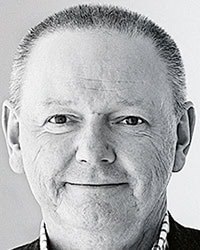
Hans Adolfsson
Chair of SUHF and incoming vice-chancellor of Stockholm University
However, he believes that research will continue to receive increased funding.
“Personally, I think it is very good that research is getting a substantial increase in the government’s latest research bill. What is unfortunate is that we did not get the increase in funds paid directly to higher education institutions that we had asked for. That would have helped to provide secure employment conditions for our researchers and teachers, for example.”
Adolfsson is critical of the current research policy’s one-eyed focus on technology and science. “I think it is a pity that politicians do not look at the big picture. We in the higher education sector have emphasised that if technological development is to be successful, society as a whole must keep up. This means that there must also be plenty of room for the social sciences and humanities and that they must receive significant funding for both education and research.
At the same time, he underlines repeatedly that policies change.
“The pendulum swings back and forth between the centre-right parties’ excellence initiatives and Social Democrats’ investments in education in all parts of country. And it will certainly continue to do so.”
Do you see any signs that politicians want to take a step back and give more freedom to the higher education institutions and researchers themselves?
“Yes, one of the positive things about the research bill that the government presented in December is that they want to review the organisational form of higher education institutions. At the same time, it is a bit contradictory, because the bill goes into great detail about what the government wants to invest in.”
What do you think about the financial situation in the next ten years?
“I am not worried about the research side. Public confidence in researchers and the research coming from universities and colleges is high. That and the fact that people at higher education institutions contribute knowledge on many socially important issues means that the state will probably want to continue to invest in research.”
When it comes to education, Adolfsson finds it more difficult to anticipate what will happen. “Funding may remain at current levels, and this will of course have implications for the volume of education we can provide. What is worrying is the economic situation in society in recent times. Rents and other costs have soared. So several higher education institutions will certainly try to streamline costs and optimise their use of premises.”
Rasmus Lindstedt, President of the Swedish National Union of Students, paints a bleak scenario.
“We agree with many others that the major problem is chronic underfunding of education and that this is likely to get worse in the future as productivity deductions remain in place, eroding higher education institutions year by year.”

Rasmus Lindstedt
President of the Swedish National Union of Students
He believes that we will reach a critical point where underfunding becomes genuinely damaging to long-term skills supply.
“So far, we have managed to limp along somehow, but I think we are approaching a tipping point where the erosion becomes completely unsustainable. The danger is that we will end up in a situation where the quality of education is so poor that it is not worth providing higher education, to put it bluntly.”
Lindstedt points out that student numbers will increase in the future.
“Statistics Sweden’s forecasts show that the cohorts now heading towards higher education are increasing quite sharply. So the target group will be larger. For us, it is easy to see that something needs to happen with the financing of higher education.”
The Young Academy of Sweden (SUA) sees two credible scenarios, both based on the assumption that the key to positive development for higher education institutions is academic freedom. One scenario points towards greater independence, the other towards greater political control of academia.
“What the universities will look like in ten years’ time will depend very much on what society looks like, especially since Swedish universities stand out internationally in as much as they are administrative state authorities. Therefore, quite a lot of the future of universities depends on how the political situation develops,” says Sofia Lodén, a professor of French at Stockholm University and Chair of SUA.

Sofia Lodén
Professor of French at Stockholm University and Chair of SUA
What is the realistic scenario?
“I think it is very difficult to say. But I am worried that higher education institutions do not have enough resources to be able to counterbalance political control.”
She gives an example from her perspective as a humanist.
“Many languages are in danger of disappearing from universities, so there may only be advanced-level researchers in a few languages. Then we will also have lost knowledge of the world around us and expertise in foreign cultures. I find this worrying at a time when people are talking about preparing for war.”
The last word goes to Gabriele Messori, a professor of meteorology at Uppsala University and Vice Chair of SUA:
“There may be some optimism about the upcoming review of organisational form. There may be some concern that constitutional protection of academic freedom is not a priority right now. There may be concern about the downgrading of humanities and social sciences in relation to natural and engineering sciences. And there may be concern that so much research funding is earmarked for specific initiatives.”

Gabriele Messori
Professor of meteorology at Uppsala University and Vice Chair of SUA
He emphasises that productivity deductions do not make sense when it comes to teaching, as reducing the number of teaching hours does not increase efficiency.
“If higher education institutions are to be able to support societal and economic development, they need to have strong research, strong research environments and high-quality teaching.”
“So if we deprioritise education, we will see devastating effects. Perhaps not immediately, but in the longer term it risks creating a major crisis in the Swedish system. I see the deprioritisation of education as a systemic threat,” says Gabriele Messori.
Possible outcomes of changes in funding
Four different future scenarios have different impacts:
- Same funding caps, same per-capita funding = same number of students, less and less teaching due to the productivity deduction policy.
- Same funding caps, increased per-capita funding = fewer students, perhaps more teaching.
- Reduced funding caps, increased per-capita funding = significantly fewer students, more teaching.
- Increased funding caps, increased per-capita funding = same number of students, more teaching.
The elephant in the room – productivity deductions
The productivity deduction policy aims to lead to increased efficiency, but the result is an erosion of resources.
Reason: It is not possible to teach faster or to hold seminars with 50 students.
Possible solution: Increased efficiency through collaboration between higher education institutions. For example, the same course is offered at several universities.
Possible consequence: Will fewer university teachers be needed?
The influx of students
The pressure on higher education places is unlikely to decrease; on the contrary, the 19-to-24-year-old cohorts will grow over the next ten years.
If the same number of students is admitted per cohort, the proportion of each cohort entering higher education will fall.
Positive: Students who start studying can be assumed to be in a better position to complete the programme
Negative: The proportion of highly educated people in the population will decrease.


